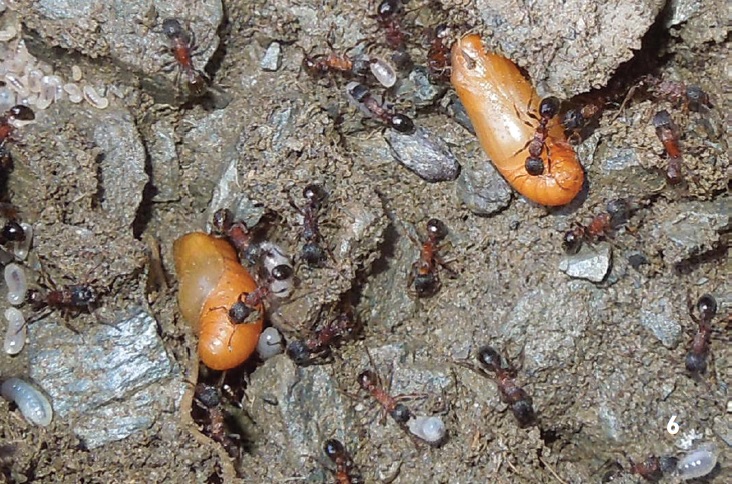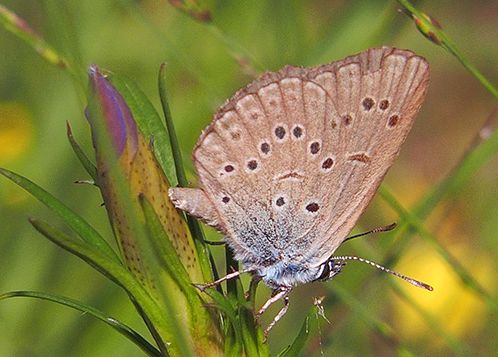Alcon blue laying an egg
Some caterpillars (for example blue butterflies, Phengaris spp.) need ants to survive and develop into adults. They spend a large part of their development in ants’ nests and trick the hosts into feeding them. Here is their story.
Childhood in the wild
The blue butterfly caterpillar hatches from an egg laid on the flowers of host plants and spends its early weeks feeding on flowers. But at some point, it has enough of this diet, leaves the flower and drops to the ground on a silken thread. It releases chemical signals (pheromones) that attract red ants (Myrmica spp.) but can also actively search for them.
When an ant finds the caterpillar, it strokes it all over with its antennae. In turn the caterpillar starts producing drops of sweet liquid that the ant eats. After a while the middle or end part of the caterpillar’s body flattens, making it look similar to an ant larva. This makes the ant pick it up with its jaws and bring it to its nest.
Youth in a nursery
The ant brings the caterpillar to the nest’s nursery, where it spends time among ant larvae and is taken care of by worker ants. The caterpillar smells like the other larvae so it is fed rather than being attacked. Sometimes it can even produce special low-frequency sounds similar to the ones made by ant queens. This way the caterpillar can gain even more attention and food than the ant’s larvae. And when the nest is in danger it may be saved before the host’s young*.
Adulthood with difficult start

After a while the caterpillar turns into a pupa in the ants’ nest and at last it emerges as an adult butterfly there. It does not smell or look like an ant’s larva anymore and the ants treat it like an intruder and try to kill it. But the whole body of a newly emerged butterfly is covered with loose scales. Whenever ants try to grab it, the scales detach and the butterfly continues on its way out of the nest.
Once above the ground, the butterfly climbs on vegetation and waits for its wings to inflate and dry.
New generation with a bit of help from plants
At last, the female mates with a male and is ready to lay eggs. It seems that it is attracted to plants that release specific chemicals in response to ants disturbing their roots. This way she lays her eggs on plants close to ants’ nest, and a new cycle begins.
* In some species (for example large blue butterflies – Phengaris arion) the caterpillar goes even one step further. It actually feeds on the ant larvae.
Main information source for this post: “How to read an insect” – book by Ross Piper.
Polską wersję tego wpisu możesz znaleźć tutaj.
Photos: Adult butterfly: by Ocrdu – Own work, CC BY-SA 4.0, https://commons.wikimedia.org/w/index.php?curid=72446728; pupae: Tartally A, Koschuh A, Varga Z – The re-discovered Maculinea rebeli (Hirschke, 1904): Host ant usage, parasitoid and initial food plant around the type locality with taxonomical aspects (Lepidoptera, Lycaenidae) doi:10.3897/zookeys.406.7124, CC BY 3.0, https://commons.wikimedia.org/w/index.php?curid=33317752

